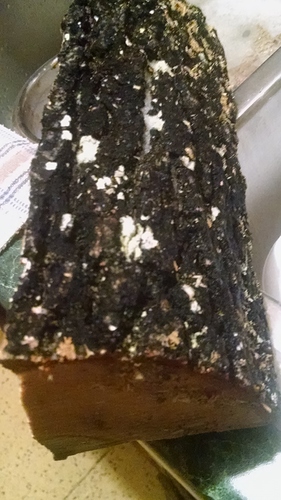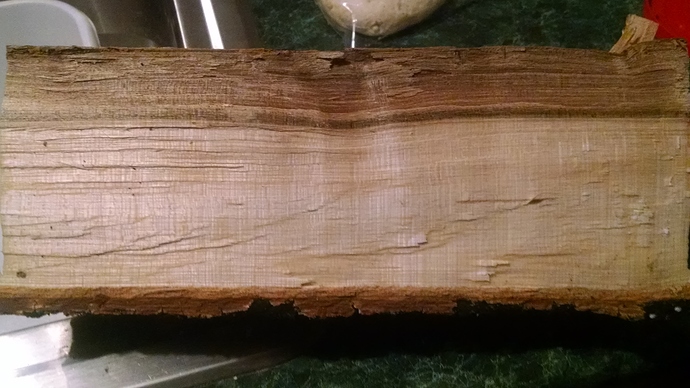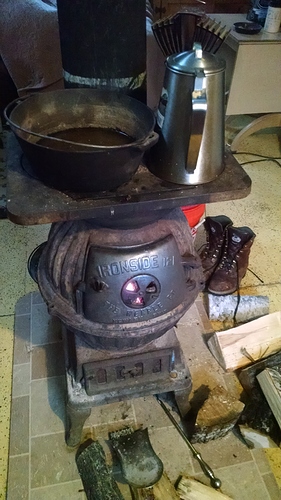Most are Bill but I seen a few stainless ones at the junkyard. I guess they come both ways.
I’m in for half Jim.
Hi Bill, is the siding on the house yet? I ask because the thermal transfer through the frame is much higher until you strap and side the structure. Ideally you install a layer of foam on the outside but you have to decide that at construction of course. As an obsessive building envelope geek I can tell you that all r19 walls are not created equal. Layering, material changes and air spaces can create a wonderful system without much more money. Next house right? Sorry, can’t sleep.
David Baillie
http://www.ebay.com/itm/5-Sq-Ft-of-Underfloor-Heating-System-Carbon-Heating-Film-110-120V-/252048254083?hash=item3aaf3f2483:g:b7AAAOSwHnFVwpEb
Here’s the other one I saw. We need to use our charcoal carbon and make our own. 
Wow Carl, I like that better!
I would just need to get them out out the inch of ice they are stuck in. Which is doable.
Hello Bill,
I responded a couple times to your pm, but it keeps bouncing back as undeliverable. Please call me when it’s convenient. 860-681-8397. Thanks
Bill looks more like maple than ash. Can you flip it over? Maple’s grain will look more like that of birch while ash’s will look more like that of an oak.
yea that is maple Bill
While all you guys are pros at wood burning, I am a mere novice. Having run out of seasoned Oak over a month ago, I am finding what I have on my land to burn in my old stove. The nights aren’t as cold anymore which means we are at 0° or more. I’ve burned green Aspen, Birch and Maple. When splitting the Birch, I peel the thick, loose chunks of bark and place it in a 5 gal bucket for fire starter. I have set aside some wood that Jim L has sent with me to split down to kindling for the mornings.
I have found the Birch flares up better but doesn’t seem to burn as hot as Maple. Once I have a good bed of coals in there, it doesn’t matter what I put in there and eventually dries out and burns well. Right before bed, I fill it with a mixture of green Birch and Maple, close the damper and bottom air down and will still find coals 6 hours later. My stove isn’t air tight, so air still sucks through enough for the fire. I learned it’s an old coal stove for parlors and train cabooses. I leave the top air open all the time. I have 21’ of vertical stove pipe which draws really good. Any temps above zero makes my wood stoving job much easier. If the fire is out when it’s below zero, a few attempts are needed to start the thermal draw. The frozen chunks of snow from plowing go into my cast iron pot for humidity.
I will be spending the rest of the winter cutting down trees and filling up my wood shed which is 8’x10’x7’. I think I will need one (or two) twice that size for future stock piling.
It’s all been a good learning process of which I fully expected and therefore not disappointed. Real life is a good teacher. Although I bought a backup propane heater, it wasn’t installed. I have used less than 5% of my 250 gallon propane tank and that is from cooking and making coffee.
None of this is work because I enjoy it. The tractor fires up at -10F and ready to work when needed. She’ll buck and snort the first 5-10 minutes but then is fine.
Gotta drop another tree, take care
Hi bill, you could rig up a 2’x4’ rack placed close to the stove with a small fan for circulation. All to try to keep a few days ahead and remove humidity from the fresh stuff. I find poplar responds better to fast drying then pine or birch and holds less moisture in winter… All opinion of course.
Keep warm, David Baillie
Although I appreciate your solution ,real estate is of a prime value when 3 people live in a 12’x20’ castle. My wife wants the 5 gallon bucket of Birch bark removed to allow more room.
I did acquire a bunch of windows from Craigslist that I think I could make a good solar dryer this summer. Yep, another project added to the list.
The green wood is working out. I burned a creosote log in the stove last week my wife found at the thrift store. I’m not sure how well they work, but it can’t hurt to try?
Never enough space, never enough time…


Good report Bill. This could be part of a chapter in your book.
A book…
I wonder if I could ever sit still long enough to write a book…oh look! A squirrel…
As soon as it warms up a bit, I suggest removing the stove pipe and use one of the big wire brushes to clean it out, and then inspect it closely, looking for any pin holes or rust. My little stove burns absolutely smoke-free but I never put any green wood in it, because I think green wood makes acetic acid (especially from Oak) that would destroy my steel stove pipe. My pipe is over 40’ long, and I end up replacing most of it every two years. Lacking a real wood splitter, I’ve been cutting rounds that I can lift, which means they are only six inches long. (My grandma called that kitchen stove wood.) These little pieces work really well in my little stove. I was given a monster stove made by Atlanta Stove Works, Atlanta, Georgia that accepts wood 24" long. (Stove is called a Huntsman.) Big chunks smoulder and smoke, and it tarred up my chimney pipe, so I stopped using it. For a while, I had the two stoves feeding into the same pipe, but eventually just disconnected the Huntsman because I never want to see any smoke out of the chimney. We also have a cast iron Kacheloven, imported from Germany, that is covered with tile and was supposed to burn coal or wood. We burnt/wore it out with Mesquite wood, and spent over a thousand bucks to fix it the first time. Second time, I spent about $500 for parts, and third time I disconnected it. Very pretty six foot high ceramic stove surrounded by wooden benches… Guess I could weld up some adapters to go from European stove pipe to my six inch steel pipe, and perhaps build some stainless heat exchanger boxes, etc.
Maybe go up on the roof, remove the chimney cap, and see how much creosote build up you have, and while you are there, run the wire brush down the pipe. Thanks for keeping us posted. Very interesting stuff, especially to someone who hails from Anoka, MN. (Actually Andover, before the roads were paved.)
As always Ray, I appreciate your input. You and a few others know what cold really is and advise me accordingly. Day in and day out at -20° weeks at a time, one should be ready. I didn’t know that about stove pipe wearing out every couple of years. It’s important to me to take care of that during the off season.
A great read Bill, you are winning the battle! Green wood split small standing in the corner will add humidity to the air, and dry at the same time. It may smell some, but the interior of a pine sawmill is a great smell to me.
Hi Bill. I just read your thread, really good stuff. Living the dream. I’m on a similar path, but not as far along as you are. I’m also impressed with the site generally, there’s a very practical mindset going on here, and literally hundreds of man years of experience to draw on.
I would first like to add my vote of encouragement - don’t be too hard on yourself if you haven’t always hit on the best solution to a problem, or foreseen everything, there are many ways to skin a cat, the bottom line is coming up with something practical for you, and that works. Even multi generation country dwellers will take different approaches to the same challenges.
I have my 2 cents to add on some issues, having grown up in the country, and living in even colder Manitoba:
If you have green or black ash, it’s your best bet for green burning, pretty dry wood even green, splits great, especially when frozen, and heats much like oak.
I would upgrade the stove to a modern air tight. 3 cords of oak should have been enough for your heating needs with an efficient stove. I would aim for a long firebox to avoid having to get up in the night, more heat capacity. Poplar for daytime, hardwood on a bed of coals for over night.
Birch is one of the poorest woods to try to burn green, full of moisture. If you don’t split it, even cut in short lengths it will rot / spalt over the summer, it has no decay resistance, or pores to dry through. Once dry, it’s amongst the best woods, great heating value.
This is prime wood cutting time, days getting appreciably longer, frozen ground gives excellent access, clean wood, less sweat and no bugs, enough frost that wood splits better than any other season.
Poplar (trembling aspen), will be decently dry by fall, ash the same. Birch and some woods may best wait another year, but that will depend on how it is stacked, air flow through sides of a wood shed is critical, stacked wood dries far better than random piled. Rain on the wood will defeat the drying, and rob much of the heat potential, good sheets of tin, or a proper shed is a must.
Garry Tait


